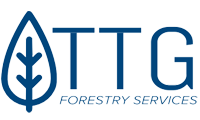| HOME > News > |
Thursday, Feb 29, 2024 6:00am

10 Tips to Prevent Wildfires
Nationally, almost nine out of 10 wildfires are caused by humans. These preventable wildfires threaten lives, property and our precious natural resources. Whether you’re a first-time visitor or a public land pro, you play a valuable role in preventing wildfires and protecting our natural resources.
Interior’s Office of Wildland Fire oversees a program spanning multiple bureaus that manage 535 million acres of public and Tribal lands: including the Bureau of Indian Affairs, the Bureau of Land Management, the National Park Service and the U.S. Fish and Wildlife Service.
Share these tips to help prevent wildfires and spread the word about #TeamPublicLands, our campaign to encourage responsible recreation.
1. Check weather and drought conditions.
Pay close attention to weather and drought conditions, which can affect the flammability of vegetation.
Avoid any activities that involve fire or sparks when it’s hot, dry and windy. If the conditions aren’t right, choose non-flammable options. Remember, conditions and local restrictions should guide your decision for any fire-related activity such as building a campfire, operating equipment, off-roading on dry grass, or burning debris.
2. Build your campfire in an open location and far from flammables.
Many people love to go camping and enjoy the warmth and light from a campfire, but your campfire can cause wildfires if you do not build and extinguish it properly.
To build a safe campfire, make sure you:
- Select a flat, open location away from flammable materials such as logs, brush or decaying leaves and needles. ?
- Scrape away grass, leaves and needles down to the mineral soil.
- Cut wood in short lengths, pile it within the cleared area and then light the fire.
- Stay with your fire.
- Extinguish it completely before leaving.
3. Douse your campfire until it’s cold.
- Douse the fire with at least one bucket of water.
- Stir it.
- Add another bucket of water.
- Stir it again.
Your campfire should be cold to the touch before you leave.
4. Keep vehicles off dry grass.
If you are off-roading, remember that your exhaust can reach temperatures of 1,000+ degrees! So, avoid driving or parking over dry grass.
5. Regularly maintain your equipment and vehicle.
Vehicles and equipment can shoot sparks from their exhaust, particularly vehicles that haven’t received regular maintenance.
Whether it’s a car, truck, or OHV (off-highway vehicle), make sure your vehicle is current on all mechanical checkups and suited for off-road adventures.
6. Practice vehicle safety.
Carry a shovel, bucket and a fire extinguisher in your vehicle to put out fires. Off-highway vehicles must have a spark arrester. You should also carry a bucket, but you could also use a helmet or anything else to carry water.
7. Check your tires, bearings and axles on your trailer.
If you’re towing a trailer, please remember to do a maintenance check to ensure the tires are not worn, the bearings and axles are greased, and safety chains are properly in place and not dragging on the ground.
8. Keep sparks away from dry vegetation.
Make sure you never operate equipment that produces sparks near dry vegetation. Always clear the area around your workspace. This area should be even larger if it is windy and dry.
Create clearings where all flammables have been removed. The width or radius of the clearing will vary with the conditions from 10 to 25 feet.
9. Check conditions and regulations before you use fireworks or consider safe alternatives.
Fireworks start over 19,000 fires and send over 9,000 people to the ER each year in the United States.
Check your local federal, state and city regulations before using fireworks. States, counties and cities may have different laws and regulations, so a little bit of research could save you the cost of an improper fireworks use penalty, or worse – the cost of fighting a wildfire.
Consider safe alternatives such as glow sticks or silly string.
10. Cautiously burn debris and never when it’s windy or restricted.
Sometimes, people burn trash, leaves, agricultural waste, or other materials.
If you plan to burn debris on your private property, make sure you have water nearby (such as a garden hose) and never burn anything if it’s windy.
Once your burn is completed, be sure to “mop up” the ashes with water and stirring.
Wildfires often start from “holdover” debris piles that were not extinguished, days or even weeks after they were burned. There may be burning restrictions in your area, so contact your local fire authority for more information and debris burning tips.
